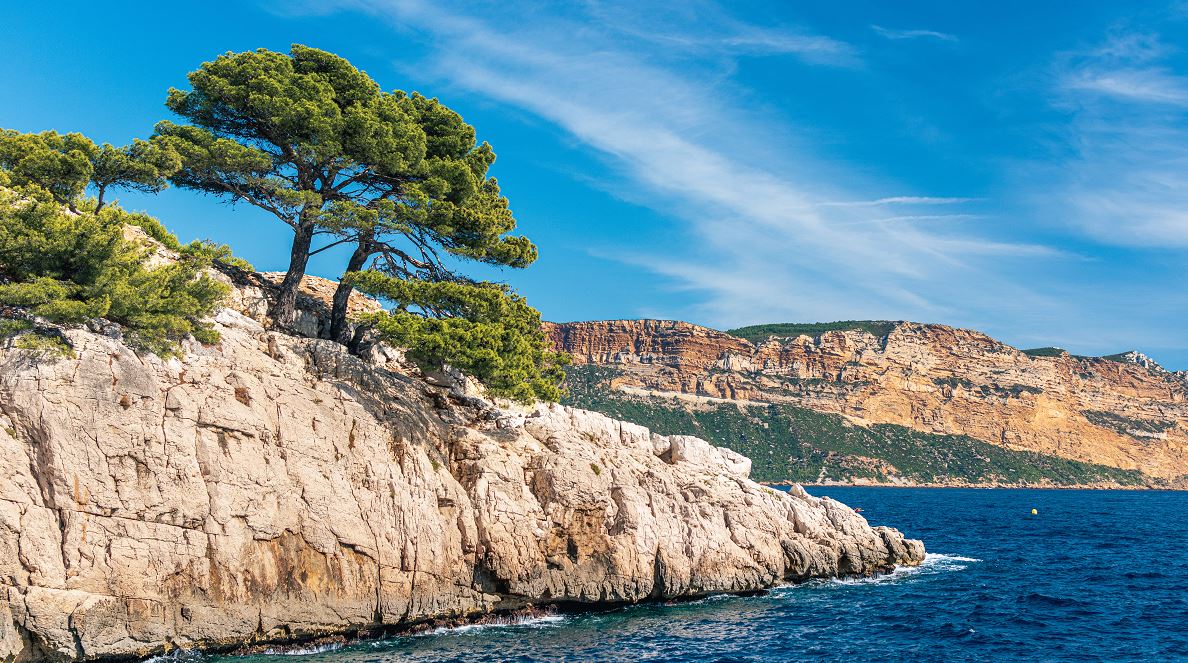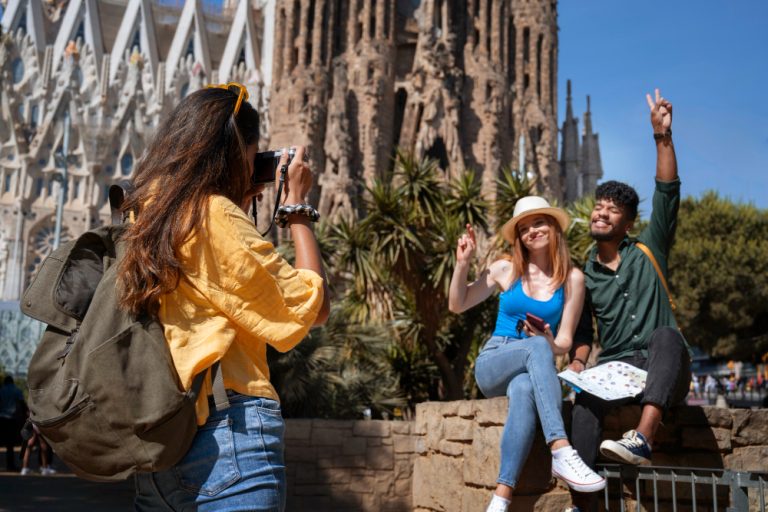The largest island in the Mediterranean is a destination like no other. With its rich history, stunning landscapes, and vibrant culture, it offers countless attractions for travelers. While landmarks like Mount Etna and the Valley of the Temples are widely known, this article uncovers 10 lesser-known gems that showcase the island’s diverse beauty. Get ready to dive into a journey filled with surprises and unforgettable experiences.
The Largest Island in the Mediterranean: Scopello: A Hidden Coastal Paradise
Nestled on the northwest coast, Scopello is a picturesque village renowned for its stunning coastline and charming ambiance. The highlight is its Tonnara di Scopello, a former tuna fishery with dramatic sea stacks rising from crystal-clear waters.
Beyond the Tonnara, Scopello boasts secluded beaches perfect for snorkeling and swimming. Take a walk through the village to admire its cobblestone streets, quaint houses, and lively piazzas. Don’t forget to sample pane cunzato, a traditional Sicilian flatbread loaded with olive oil, tomatoes, and anchovies.
The Largest Island in the Mediterranean: Vendicari Nature Reserve: A Haven for Wildlife Enthusiasts
Located in southeastern Sicily, Vendicari Nature Reserve is a sanctuary for migratory birds and wildlife. This pristine area combines unspoiled beaches, salt pans, and lush wetlands, making it a must-visit spot for nature lovers.
Explore the ruins of an ancient tuna factory and enjoy the solitude of its sandy shores, such as Calamosche Beach, known for its tranquil turquoise waters. Vendicari is also home to flamingos, storks, and herons, offering fantastic opportunities for birdwatching.
The Largest Island in the Mediterranean: Cefalù: A Blend of History and Coastal Charm
Cefalù, a medieval town on the northern coast, is one of the most enchanting locations on the largest island in the Mediterranean. Its majestic Norman Cathedral, adorned with exquisite mosaics, is a UNESCO World Heritage site and a testament to the island’s diverse cultural influences.
After exploring the cathedral, wander through narrow alleys filled with artisan shops and cafés. Don’t miss climbing La Rocca, a limestone hill that rewards hikers with panoramic views of the coastline and town.
The Largest Island in the Mediterranean: Marzamemi: A Quaint Fishing Village
Marzamemi, located in southern Sicily, is a delightful fishing village with a laid-back atmosphere. Its charming piazza, surrounded by pastel-colored buildings, comes alive in the evenings with vibrant markets and local eateries.
Taste the freshest seafood dishes and explore artisan shops selling handmade ceramics and locally produced wine. The nearby beaches, such as San Lorenzo, offer an idyllic setting to unwind.
The Largest Island in the Mediterranean: Noto: The Baroque Jewel of Sicily
Noto is famous for its spectacular Baroque architecture, earning it a place as a UNESCO World Heritage site. Its cathedral, Palazzo Nicolaci, and other grand buildings are a visual treat for architecture enthusiasts.
The town comes alive during the Infiorata di Noto, an annual flower festival where streets are transformed into vibrant carpets of floral art. Stroll through its main street, Corso Vittorio Emanuele, to soak in its beauty and savor a gelato at one of its historic cafés.
Scala dei Turchi: Nature’s Staircase
A geological wonder located near Agrigento, Scala dei Turchi is a dazzling white limestone cliff that resembles a giant staircase leading into the sea. It’s a stunning sight and one of the most unique attractions on the largest island in the Mediterranean.
Visitors can relax on the golden sandy beach below or climb the “staircase” for breathtaking views of the Mediterranean Sea. Sunset at Scala dei Turchi is particularly magical, as the cliffs glow in soft hues of pink and orange.
Palazzo Adriano: A Film Buff’s Dream
Film enthusiasts may recognize Palazzo Adriano as the filming location for the Academy Award-winning movie Cinema Paradiso. This small town in the Sicilian countryside is steeped in history and cinematic charm.
The town square, with its iconic fountain, is a perfect place to relive scenes from the movie. The surrounding landscapes offer scenic hiking trails, making it a great destination for nature lovers and film fans alike.
Erice: A Hilltop Town in the Clouds
Perched on a mountain overlooking the western coast, Erice is a medieval town that seems frozen in time. Its cobblestone streets, stone churches, and ancient walls create an ethereal atmosphere.
Visit the Venus Castle, which offers panoramic views of the coastline and distant islands. Erice is also famous for its pastries, particularly the almond-based Genovesi from the Pasticceria Maria Grammatico.
Gole dell’Alcantara: A Natural Canyon Wonder
The Alcantara Gorges are a striking geological formation created by ancient lava flows and water erosion. Located in eastern Sicily, this canyon offers thrilling adventures for outdoor enthusiasts.
Visitors can hike through its rocky pathways, wade in icy waters, or try body rafting. The gorge’s vertical basalt walls create a surreal landscape, making it a favorite for photographers and nature lovers.
Favignana: A Slice of Island Paradise
Part of the Egadi Islands, Favignana is a short ferry ride from the western coast of Sicily. This island is known for its crystal-clear waters, secluded coves, and a relaxed vibe.
Explore the island by bike, stopping at beaches like Cala Rossa, which features turquoise waters and dramatic cliffs. Favignana is also famous for its tuna fisheries and the historic Tonnara, which provides insights into the island’s maritime traditions.
Conclusion
The largest island in the Mediterranean offers far more than its well-known landmarks. These hidden gems—each with their unique charm and allure—invite travelers to dig deeper into the island’s rich history, vibrant culture, and breathtaking natural beauty. Whether you’re exploring ancient towns, stunning beaches, or awe-inspiring landscapes, there’s something magical around every corner. So pack your bags and set off on an unforgettable journey to discover the secrets of this Mediterranean treasure.
FAQs
Q1. What is the best time to visit the largest island in the Mediterranean?
The best time to visit is during spring (April to June) and fall (September to October) when the weather is pleasant, and the tourist crowds are smaller.
Q2. How can I reach the hidden gems mentioned?
Most locations are accessible by car, making it ideal to rent a vehicle for flexibility. Ferries connect the mainland and smaller islands like Favignana.
Q3. Is it safe to hike or explore natural attractions like the Alcantara Gorges?
Yes, but it’s essential to follow marked trails and safety guidelines, especially when exploring gorges or coastal cliffs.
Q4. Are these hidden gems family-friendly?
Absolutely! Destinations like Vendicari, Cefalù, and Favignana offer activities suitable for families, such as nature reserves, beaches, and easy hikes.
Q5. What traditional dishes should I try on the largest island in the Mediterranean?
Don’t miss dishes like caponata, arancini, pasta alla Norma, and desserts like cannoli and cassata. Each region offers its culinary delights to savor.
Also read: Brasilia City Tour: 10 Must-See Attractions You Can’t Miss




Leave a Comment